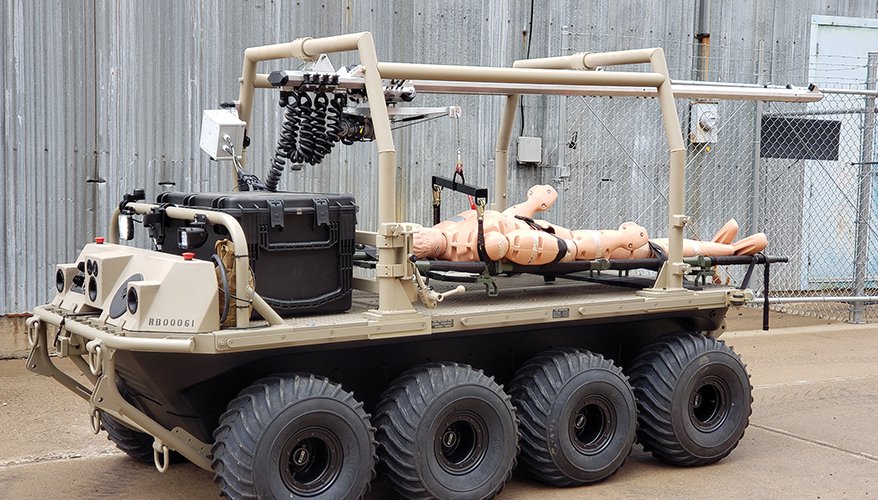ROBOTICS AND AUTONOMOUS SYSTEMS
Army Seeks Robots to Transport Wounded Troops
By Connie Lee
 Lifeline
Lifeline
RE2 Robotics photo
The Army is examining ways to use autonomous vehicles to bring injured soldiers off the battlefield.
In September, Pennsylvania-based company RE2 Robotics received $1.1 million in Small Business Innovation Research funding from the Army Telemedicine and Advanced Technology Research Center to work on a dexterous two-arm system called the Autonomous Casualty Extraction, or ACE.
“This would be a system that would go out to the casualty wherever that person is, … recognize where the person is autonomously, figure out how they’re laying [and] figure out how to safely maneuver that casualty onto this transport device that we’re developing,” Jorgen Pedersen, the company’s president and CEO, said in an interview.
The arms are mounted onto FLIR Systems’ Kobra unmanned ground vehicle that will be able to transport casualties away from the battlefield to safety. ACE will be equipped with artificial intelligence and perception software to detect the soldier’s location and figure out how to evacuate him, Pedersen noted.
Kobra has a height of 11.5 feet and can lift 330 pounds, according to FLIR.
“A medic can remotely view a casualty through this system,” Pedersen said. “A medic can also be dialed into this system … and be looking at the patient assessing what needs to be done.”
ACE is the second phase of an ongoing effort. In the first phase, the company worked on a mechanism dubbed “Lifeline” that helps medics lift injured soldiers onto a squad multipurpose equipment transport for medical evaluation, he said. SMET is a program of record to develop a so-called “robotic mule” that can transport gear and other items for the Army.
“That’s what Lifeline is, it’s really just a lifting assist device that allows only one person to do it, instead of having to have two or three people that do it,” he said. “One person can do that whole operation on their own.”
The idea is to have the soldier retrieved by ACE, be led to Lifeline and transported out on a robotic mule.
If the Army decides to continue with the work, phase 3 is slated for about two years from now, Pedersen said.
“Once we’ve demonstrated that this is functional and is safe, then we would look to work with the Army to move into a phase 3 effort to ensure that it gets added on to the SMET program of record or other programs that could benefit from this technology,” he said.
Topics: Army News

Comments (0)